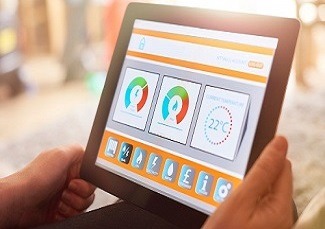Lets work together



Suite 3A, Chapel Allerton House, 114 Harrogate Road, Leeds, LS7 4NY
ukinfo@integrated-skills.com
+44 (0) 3300 888 670

The business case for smart meters relies on convincing customers to change their behaviour in relation to electricity and gas consumption. Within an energy supplier the greatest impact on affecting this change will be borne by IT functions, specifically, Customer Relationship Management (CRM), Billing and Route Planning systems.
Until the introduction of smart meters, traditional meters had to be physically read to give an accurate indication of gas, water or electric use for residential & commercial customers. Utility companies would employ a team of meter readers to cover a different route or area every day, based on a billing (invoicing) cycle. The CRM only really existed to manage complaints.
Smart meters change all that – allegedly.
The CRM (Customer Relationship Management)
The UK consumer market of todaycan be characterised by ‘right here, right now’, i.e., instant access by consumers to the facts, the process and the result. Increased pressure to improve customer service from rising customer expectations is part and parcel of any consumer facing offering. In the domestic energy sector this is combined with the regulatory impact of ensuring that consumers can switch suppliers simply, and cost-effectively.
The CRM system is therefore of vital importance to the supplier as it contains, analyses and processes data that enables them to win clients from competitors as well as retain existing ones. Monitoring and understanding consumer behaviour, as well as their energy consumption, is a vital component of any system. The move to self-service online, for the management of suppliers by consumers and to check billing, results in less demand for human led call centres, but a consequential rise on the demands of the CRM/customer facing online system. Further still, consumers are more conscious of, and involved in, their consumption decisions which results in a higher level of data driven communication instigated by the supplier (and contained within the CRM).
Billing (invoicing) systems
The crown jewel of any company’s IT footprint is the system that sends the invoices! And, understandably, it is the one system that senior management are least keen on replacing. But the question must be asked – of any company not just those in the energy sector – are they fit for purpose? In a sector where consumers can switch suppliers annually, and where data is transmitted to internal systems from 3rd part systems such as comparison websites, it is imperative that the billing system can:
· Facilitate accurate data entry from external sources, as well as internal teams
· Process that data securely, sometimes to 3rd party systems
· Delete personal data months after it was entered
· Merge data with consumption data for behaviour profiling
· Send out a bill that is accurate but timely and in various formats
· Manage location-based data, ie, x & y coordinates associated with meter locations

GIS based route planning & optimisation
With old style meters consumers were passive recipients of energy and meter readers could attend a property in the knowledge that a meter reading would be required. Smart meters, however, give more control to consumers by allowing them to assess their consumption in near real time, and adjust consumption accordingly. In terms of the meter reader, smart meters also send automated digital readings to utility suppliers so no manual intervention is required and, furthermore, automated readings provide a timelier assessment of actual use in a more efficient manner at less operational cost.
For a route planner, smart meters pose a challenge. The UK is currently in a transitional period, with a growing number of households using smart meters, and a dwindling majority relying on the old meters. By law, every household in the UK will need to be offered a smart meter by their utilities supplier before 2020 (though energy consumers are under no legal obligation to accept one). Therefore, utilities companies face a continual reassessment of meter reading routes, as customers progressively adopt smart meters, or not. The key for the route planner is to continually adjust existing meter reading routes in the light of a decrease in meters that need to be read manually, and making each route a financially viable option for the business. All at the same time as ensuring safety inspections are carried out at the correct frequency and non-communicating meters are dealt with efficiently.
In addition, smart meter adoption requires the deployment of installation teams, with their own route planning requirements. Consolidating the routes of installers and meter readers into a single cost-effective system is another key challenge faced by route planning software users over the coming two years.
Route optimisation solutions based on a GIS (Geographic Information System) platform have the added advantage of being able to pin-pinpoint addresses to below five meters, and add a service time based on the location of the meter within a property, eg, external rear, front, side etc as well as internal kitchen, under the stairs, upstairs cupboard etc.
Would you like to know more about Smart meters and their impact on the internal IT systems of energy suppliers? Fill in your details below and let us know how we can help.
Website Designed & Built by we are CODA